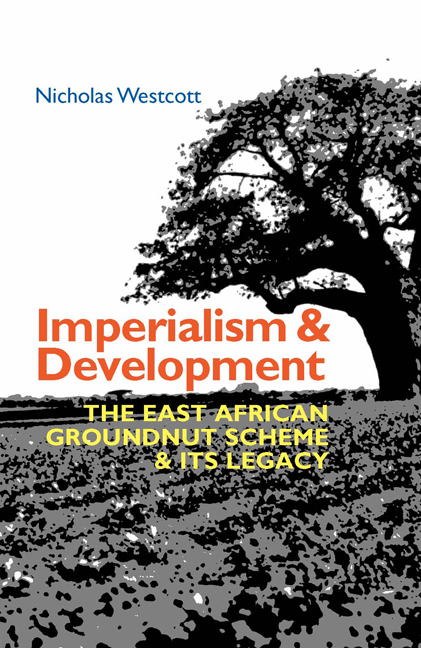Book contents
- Frontmatter
- Dedication
- Contents
- List of Illustrations
- List of Abbreviations
- Miscellaneous Frontmatter
- Preface and Acknowledgements
- Map
- Introduction
- 1 Austerity
- 2 A Scheme is Born
- 3 ‘The Poison of the Official Pen…’
- 4 The Groundnut Army
- 5 Beating about the Bush
- 6 The Overseas Food Corporation
- 7 1949: The Crisis
- 8 The Last Chance
- 9 A Sudden Death
- 10 Legacy and Lessons
- Bibliography
- Index
- Eastern African Studies
Preface and Acknowledgements
Published online by Cambridge University Press: 26 May 2022
- Frontmatter
- Dedication
- Contents
- List of Illustrations
- List of Abbreviations
- Miscellaneous Frontmatter
- Preface and Acknowledgements
- Map
- Introduction
- 1 Austerity
- 2 A Scheme is Born
- 3 ‘The Poison of the Official Pen…’
- 4 The Groundnut Army
- 5 Beating about the Bush
- 6 The Overseas Food Corporation
- 7 1949: The Crisis
- 8 The Last Chance
- 9 A Sudden Death
- 10 Legacy and Lessons
- Bibliography
- Index
- Eastern African Studies
Summary
In July 1982, I visited Kongwa.
It is a small stop along the Dar es Salaam–Dodoma bus route in Tanzania. There were a few market stalls, a scattering of dwellings separated by dusty pathways and an occasional modest hoteli (local bar-cum-guest house). It was very dry. The pump for the new well was broken, so the people relied on dribbles of water from a large storage tank for their supply.
Nobody had heard of the Groundnut Scheme. I tried to explain what it was in my broken Swahili, but a boy eventually took me to see Mzee Mbogo, who spoke English. ‘Ah,’ he said, ‘you mean “The Overseas”…’. He used to work for ‘The Overseas’ as an accounts clerk, and was most amused that anyone wanted to write about it. I explained that I wanted to see what was left of the scheme. This led immediately into a bureaucratic morass over whether I had the necessary permits to do so, and whether the local Party officials would let me wander around on my own. A part of the nearby area had been given by President Nyerere to the ANC as a training camp. In those days a white face in these parts looked suspicious unless accompanied by a dog collar or a cassock.
Eventually, the next day, I was taken by two young lads to walk around the area the locals referred to as ‘Half London’. Two miles from the village, the old site of the Overseas Food Corporation (OFC) headquarters was like a ghost town. Empty concrete platforms lay among the thorn bush, steps leading up to emptiness, where a long-vanished veranda used to stand. A waterless washbasin stood alone on one. A small overgrown roundabout in the middle of nowhere had one or two barely legible road signs: ‘Piccadilly’, ‘The Strand’ … and a small stretch of tarmac ran 30 yards from each of the turnings until it petered out into sandy track. A ruined, roofless church stood on the hillside above, looking forlornly over the scene.
The only extant buildings belonged to the local hospital. ‘It used to be three times the size’, said the old doctor, ‘but they took the other buildings away to South Africa.’
- Type
- Chapter
- Information
- Imperialism and DevelopmentThe East African Groundnut Scheme and its Legacy, pp. xii - xvPublisher: Boydell & BrewerPrint publication year: 2020



